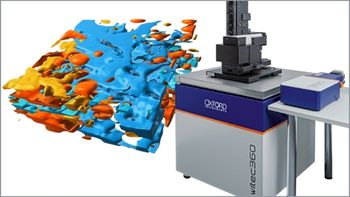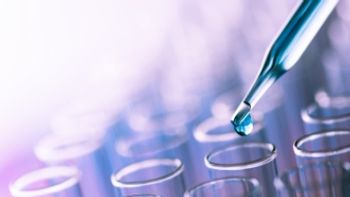
Microplastics Analysis in Minutes Not Hours
The presence of microplastics in our waterways, air, food, and even bottled water is emerging as an environmental and potential human health threat. The importance of accurate identification, characterization, and quantification of these particles in chemical identity, size, shape, and total mass is growing interest. Learn more about how the Agilent 8700 LDIR solution for microplastics analysis can make this work faster and easier in your laboratory.
Dates & Times:
- US & Europe Broadcast: Tuesday, August 24, 2021 at 9am EDT | 8am CDT | 2pm BST | 3pm CEST
- US Broadcast: Tuesday, August 24, 2021 at 4pm EDT | 3pm CDT | 1pm PDT
- Asia Pacific Broadcast: Tuesday, August 24, 2021 at 10:30am IST | 1pm CST | 2pm JST | 3pm AEST
Register Free:
Event Overview:
Microplastics in the environment are fast coming into focus as we are beginning to understand just how far these man-made products have made their way into eco-systems and food chains alike. The use of plastics has been growing for decades, and now small plastic microbeads are also used in everyday products such as cosmetics, toothpaste, and personal care products. Contamination in our waterways, air, and food (such as bottled water) from these microplastics (1 micrometer to 5 mm in size) is gaining significant public interest due mainly to their emergence as an environmental and potential human health threat.
While regulators are trying to understand the extent and toxicity of the problem, researchers and analytical methods bodies are working towards standardized analytical solutions to characterize these particles in terms of chemical identity, size, shape, and total mass.
Mid-infrared and Raman spectroscopy are fast emerging as leading techniques for this work. They are non-destructive and effective, and while they have benefits over traditional methods, neither methods are fast or easy.
The new 8700 LDIR Chemical Imaging system with a fully automated workflow for microplastics changes the game. Gone are days where an expert spectroscopist needs to fill detectors with liquid nitrogen before setting up a complex system for a 4-hour scan, all that before the computer needs to process gigabytes of data per sample. The 8700 LDIR provides all of the benefits of mid-infrared spectroscopy in an easy-to-use and fast solution.
Key Learning Objectives:
- How to optimize microplastics analysis with QCL-based infrared imaging
- A new efficient and automated workflow for microplastics analysis
- How to optimize microplastics analysis with the 8700 LDIR
- The workflow of the 8700 LDIR
- Learn about optimized sample preparation to suit the 8700 LDIR
Who Should Attend:
- Microplastics researchers
- Microplastics analysts from commercial, QA, or research labs seeking faster and easier analysis methods
- Those interested in contamination of wastewaters, seawater, freshwater, air, sediments, and food (such as fish, shellfish, crustaceans, and bottled water)
Speaker:
Darren Robey
Product Manager: IR Imaging
Agilent Technologies, Inc.
Register free:
Newsletter
Get essential updates on the latest spectroscopy technologies, regulatory standards, and best practices—subscribe today to Spectroscopy.




